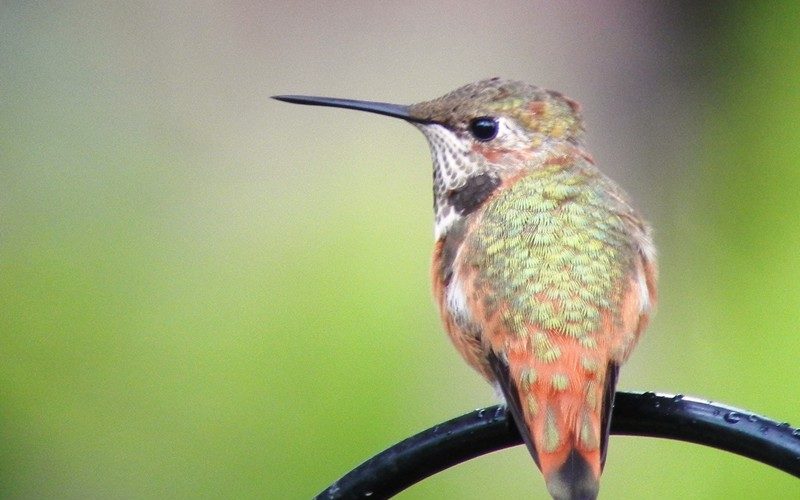Rufous Hummingbird a rare and wonderful sight
AMANDA BANCROFT
Making Ripples
As autumn begins on the equinox Sept. 23, some of those quick-falling fiery leaves may not be leaves at all! The Rufous Hummingbird (Selasphorus rufus) is a blaze of orange, red and green reminiscent of autumn foliage. Iridescent in the sunlight, this hummingbird is a rare sight worth waiting for in Arkansas. But what are the odds you’ll actually see one?
According to BirdsofArkansas.org, it’s possible to spot some of the western species of hummingbirds in our state. “The Ruby-throated Hummingbird is the most common Arkansas hummingbird, although western species, like the Rufous hummingbird, are sometimes spotted in the state. After October, most Ruby-throated Hummingbirds have migrated out of the state, so check lingering hummingbirds carefully for these other species.” By a process of elimination, it’s easier to notice a hummingbird in winter here. Keep those feeders out through the migration season to make the trip easier for the Ruby-throats, and leave them up through winter if you want a better chance to admire a Rufous.
Local birder Joe Neal says he’s seen a few from time to time and shared various reports from July through April. “For Northwest Arkansas, we accumulated approximately 13 records [between] 1987-2006; three of these observations involved Selasphorus species that could not be identified. There have been many additional observations post-2006. Most are clustered from September to mid-December.” Considering all the available data, Neal says it’s clear that a small number of Rufous do seem to migrate through western Arkansas. That makes an autumn visit much more likely than winning the lottery, which is some comfort to us hopefuls.
The Rufous is not only a transient that travels the wild winds like the geese, but also a rare winter resident that cozies up to our feeders and hunkers down until spring or takes a summer holiday here. Some repeat sightings are particularly exciting. “An especially intriguing Rufous record involves the west side of Kessler Mountain in Farmington,” Neal wrote. “It was identified and photographed on Nov. 20, 2009. Ann Johnson stated that she had been seeing a Rufous Hummingbird for the previous three years, including one that summered in 2009. Paige and Mary Bess Mulhollan saw her bird for Fayetteville Christmas Bird Count on Dec. 20, 2009. Good images were collected by Jacque Brown and David Oakley. An adult male Rufous returned to the Johnson feeder on Aug. 2, 2010.” Maybe some individuals see our area as an attractive hotel, or perhaps they are forced to stop for longer than usual due to unforeseen circumstances.
Rufous hummingbirds migrate farther and nest further north than any other hummingbird species, going as far as Alaska! They feed on nectar and insects. The International Union of Concerned Scientists Red List uplisted the species in 2018 from Least Concern to Near Threatened. Declining populations of Rufous hummingbirds are caused by the effect of pesticides on the birds’ insect prey, and climate change, which makes flowers bloom so early that the migrating hummers arrive too late to feed.
Males and females appear quite different. Males have an overall orange and white look, and females are mostly green and white, but there are green-backed males, though rare. Words can’t do them justice, so it’s best to find many photos of both sexes to compare differences between individuals. The Cornell Lab of Ornithology explains that juveniles and adult females are indistinguishable from the Allen’s hummingbird species unless closely observed. It might help if you get good quality photos of your visitor that can be shared with an expert. Regardless of which species visit your feeders this fall, it’s bound to be a colorful sight rivaling even the best autumn foliage.
Amanda Bancroft is a writer, artist, and naturalist living in an off-grid tiny house on Kessler Mountain. She and her husband Ryan blog about their adventures and offer tips to those wanting to make a difference at www.RipplesBlog.org.Brighter Than Autumn Leaves










